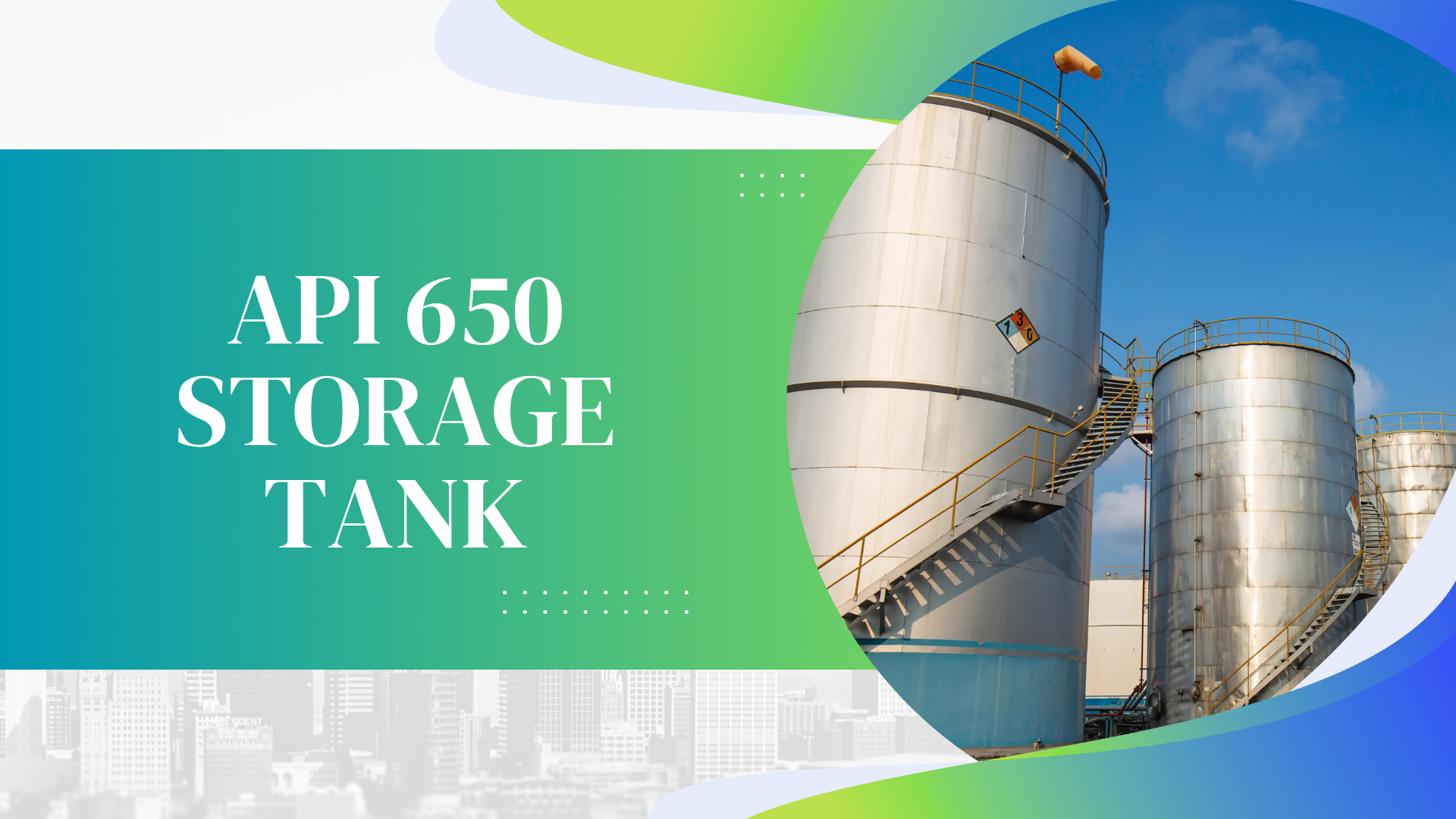-
Новости
- ИССЛЕДОВАТЬ
-
Страницы
-
Группы
-
Мероприятия
-
Reels
-
Статьи пользователей
-
Offers
-
Jobs
-
Форумы
-
Кинозал
API 650 Storage Tank: A Complete 600-Word Overview

In industries like oil & gas, petrochemicals, water treatment, and chemicals, the safe and efficient storage of liquids is absolutely essential. One of the most trusted standards for this purpose is API 650, which defines the design, fabrication, inspection, and testing of welded steel storage tanks. These tanks are widely used across the world for storing petroleum and other liquid products under atmospheric or low-pressure conditions.
This blog explains what an API 650 storage tank is, its design components, benefits, challenges, and why it remains the global benchmark in storage engineering.
What Is an API 650 Storage Tank?
API 650 is a standard established by the American Petroleum Institute that specifies the minimum requirements for welded, vertical, cylindrical aboveground tanks. These tanks are designed for atmospheric pressure or slightly pressurized conditions and are built from high-quality carbon steel or stainless steel.
The standard ensures that the tank’s design considers hydrostatic pressure, temperature variations, corrosion allowance, and external forces like wind and seismic loads. API 650 also outlines rules for welding, inspection, and testing to guarantee the tank’s long-term structural integrity.
Key Design Components
1. Shell (Tank Wall)
The shell is the main cylindrical body of the tank, built from rolled steel plates welded together. Each course of the shell can have a different thickness depending on the pressure and height of the stored liquid. Stiffening rings or wind girders are added to large tanks to prevent distortion and provide structural strength.
2. Bottom (Floor)
The tank bottom must be fully supported by a uniform foundation. It’s typically made of butt-welded plates and often includes an annular ring plate for load distribution. To ensure complete drainage, the floor is usually sloped slightly toward a sump.
3. Roof
API 650 allows both fixed roofs (like cone or dome types) and floating roofs that move with the liquid level.
· Fixed roofs are common for non-volatile liquids and are designed to handle snow, live loads, and venting pressures.
· Floating roofs are ideal for volatile liquids like crude oil as they reduce vapor losses and minimize emissions.
4. Nozzles and Openings
The tank includes nozzles, manways, vents, and drains for filling, emptying, and maintenance. These openings are reinforced to prevent stress concentration around welds.
5. Foundation and Anchorage
The foundation distributes loads from the tank to the soil and prevents uneven settlement. Anchor bolts or ring walls are used to resist wind uplift or seismic forces. A well-designed foundation ensures long-term stability and prevents leakage or deformation.
Advantages of API 650 Tanks
a. Standardized and Reliable:
API 650 provides a globally accepted framework for designing safe and durable storage tanks.
b. Long-Term Durability:
Strict welding and inspection guidelines ensure the tank remains strong for decades.
c. Flexible Design Options:
Suitable for various materials, diameters, and roof types depending on the stored fluid.
d. Environmental Benefits:
Floating roofs significantly reduce vapor losses and protect against air pollution.
e. Lifecycle Safety and Maintenance:
When paired with inspection standards like API 653, API 650 tanks offer complete lifecycle safety and maintenance control.
Challenges and Considerations
While API 650 tanks are robust, there are certain challenges engineers must address during design and operation:
a. Soil and Foundation Issues:
Weak or uneven soil can cause settlement and deformation if not treated properly.
b. Corrosion Risks:
Aggressive liquids or humid environments require protective coatings or internal linings.
c. Welding Quality:
Skilled welders and proper non-destructive testing (NDT) are essential to avoid cracks or leaks.
d. Pressure and Venting:
Even small pressure changes can stress the roof or shell; proper vent design is vital.
e. Aging and Maintenance:
Over time, tanks may face corrosion or thinning. Regular inspections and maintenance are critical for continued safety.
Conclusion
An API 650 storage tank represents engineering precision, safety, and reliability. Designed under a rigorous standard, it ensures that large-scale liquid storage is both efficient and secure. From the shell and roof to the foundation and accessories, every component is carefully calculated to handle pressure, corrosion, and environmental challenges.
Following API 650 not only guarantees a tank’s structural integrity but also reduces operational risks, extends lifespan, and promotes environmental safety. For any industry dealing with bulk liquid storage, adopting API 650 standards is the smartest way to ensure safety, performance, and peace of mind.
- AI
- Vitamins
- Health
- Admin/office jobs
- News
- Art
- Causes
- Crafts
- Dance
- Drinks
- Film
- Fitness
- Food
- Игры
- Gardening
- Health
- Главная
- Literature
- Music
- Networking
- Другое
- Party
- Religion
- Shopping
- Sports
- Theater
- Wellness


